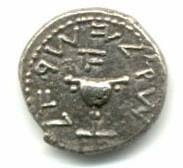Continuing the series on collecting ancient coins, with Part 1 available here and part two available here I'll now discuss grading.
To begin, grading is a rather subjective art and rather hard to quantify with scientific precision. One dealer's or collector's Very Fine may be another's Extra Fine. With that in mind, and realizing that few topics spark more controversey when dealing with any collectible, aside from the question "is it fake?", than what is the grade or condition, here is an introductory guide to grading, complete with my own opinions and idiosyncracies.
The grades -- from finest to foulest, along with their common abbreviations -- are:
Mint State (MS) - A controversial grade for an ancient coin, conservative dealers may grade the coin Extra Fine and the more liberal may proclaim it to be mint state. Basically the coin looks as perfect as it did when it left the mint where it was struck. Amazingly, many ancient coins are in such good condition, having been found in hoards buried to preserve the wealth of those facing disaster or uncertainty over the centuries.
Extra Fine (EF or XF) - Very slight wear only on the high points of the coin (Ancient coins are not flat like modern coins and have real depth and the designs on the coin typically "stick out". Hair on the head of the person depicted is easily seen with individual hairs visible.
Very Fine (VF) - The higher spots on the coin will show wear, the design is still fully recognizable and the detailing can be seen. Individual hairs or design lines starting to meld into one another, the lettering at the edges of the coin may be worn but still readable.
Fine (F) - More wear than very fine, the design is still visible but details like hair will be highly worn down so that only the outline of the design may be visible with none of the fine lines remaining, legends are also likely to be flattened and hard to read but still legible.
Very Good (VG) -Coins are heavily worn, on the entire surface of the coin. Outlines of the design remain and the lettering may be extremely hard to read and may have been almost completelty worn down.
Good (G) - Very heavily worn, legends may be badly worn or completely unreadable, much of the design cannot be identified but it may still be possible to attribute and identify.
Fair (Fair) - Legends are worn smooth, only the major elements of the design are visible, often can be identified only by recognizing the potrait or representation upon it or the general type of the coin.
Poor (P) - In this grade it is impossible to tell what the coin was and it is pretty much reduced to just an old small piece of metal that used to be a coin.
Completely Really Amazingly Poor (CRAP) (ok it is not an official condition but the acronym is often heard around the bargain bins at vendor's tables at coin shows).
Note there are also "about" or "Good" grades such as aVF for "about Very FIne". or GVF for Good Very Fine. Typically either a conscientious or optimistic dealer or collector who realizes the coin doesn't quite fit the higher category but nonetheless considers it a cut above the lower category.
Grading has very real effect upon the price of the coin. A coin that may be $20 in VG condition may be $200 or more in VF, depending upon other factors as well such as relative scarcity and the overall appearance and historical importance of the coin, as well as collector interest in the type.
Friday, November 14, 2003
Subscribe to:
Post Comments (Atom)

No comments:
Post a Comment